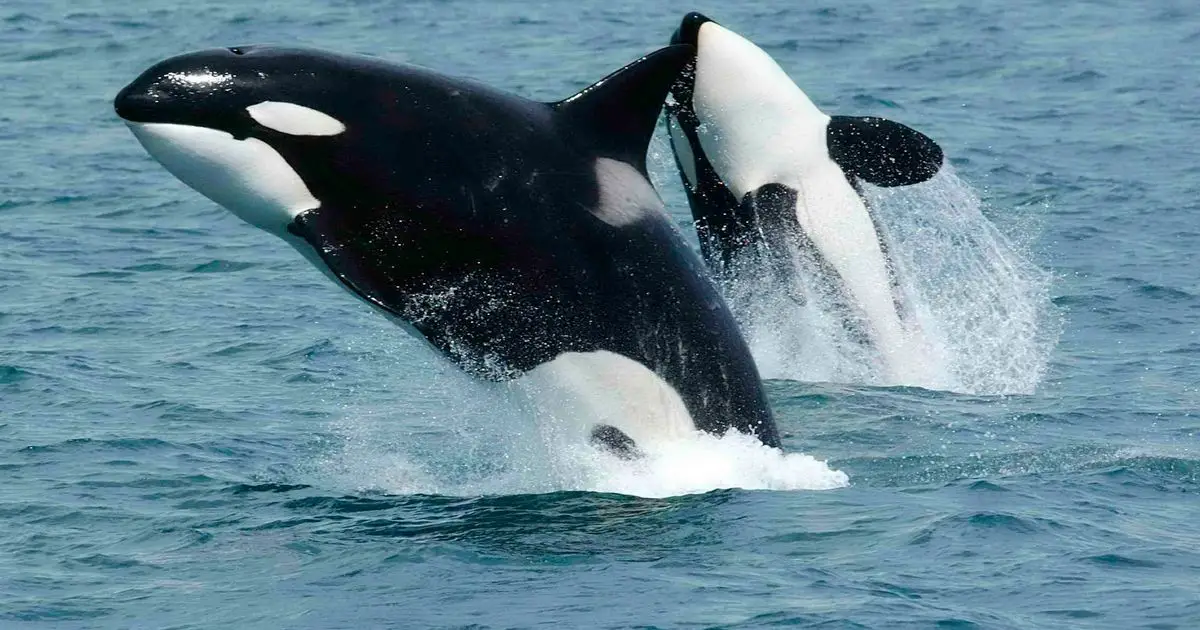It is the first time the gruesome attacks on the world’s largest animal have been recorded and sheds fresh light on marine ecosystems for research teams
Image: Reuters)
Orcas have been recorded hunting and eating the world’s largest animal – the blue whale.
The killer whales teamed up to ram the beast’s flank – forcing it underwater, say scientists.
It is the first time the gruesome attacks have been recorded – shedding fresh light on marine ecosystems.
The orcas, or killer whales, even swim inside their giant prey’s mouths – eating their tongues before they die.
An Australian team stumbled across the phenomenon during an annual survey off the Perth coast.
Isabella Reeves, a PhD student at Flinders University, Adelaide, said: “When we arrived about 14 killer whales were attacking the blue in 70 meter waters, with the female killer whales leading the attack.
(
Image:
J Daw)
“At arrival we already noticed a substantial flesh wound on the top of its head with bone exposed.
“The dorsal fin was missing, no doubt ask off by the killer whales. Tooth-rake marks were evident in front and behind where the dorsal once was and even all the way to the whale’s tail.”
Blue whales are the largest creatures to ever live. They can reach up to 110 feet long and weigh 200 tons – as much as 33 elephants.
Their heart is the size of a Volkswagen Beetle, according to World Wildlife Fund.
Females are bigger than males. The discovery could help save the endangered species. There are about 10,000 to 25,000 left in the wild.
(
Image:
(Getty Images/Stocktrek Images)
Lead author John Totterdell, of the Cetacean Research Centre, Western Australia, said: “Soon after, there was large chunks of skin and blubber stripped off the sides of the whale.
“The blue was bleeding profusely and was weakening, evident by its slow speed.
“Coordinated attack by several killer whales resulted in some females ramming the side of the whale while others attacked the head.
“Close to the end, a female animal lunged head first into the blue’s mouth, presumably to feed on the tongue. The whale weakened more and we did not see the carcass again.
“After the whale carcass sunk, about 50 killer whales were in the area feasting and sharing around the blue’s flesh.”
The grisly event described in Marine Mammal Science happened nearly three years ago.
Just two weeks later a blue whale calf was taken by many of the same individuals. A similar incident occurred last year.
(
Image:
Reuters)
The chaos also attracted flesh-footed shearwaters, albatross, storm petrels and groups of more than 100 long-finned pilot whales.
Orcas are the ocean’s apex predator – mainly feeding on fish, squid, seals, sea birds.
They are much smaller than blue whales – reaching up to 30 feet in length and weighing over six tons.
Until now, it was thought they only ate whale calves of much smaller species – such as grays and humpbacks.
Understanding their role in the food chain is vital for monitoring their prey – including those still recovering from commercial whaling.
In Australia, two populations of killer whales have recently been discovered – and both feed at least in part on marine mammals.
One, found off the west coast, has over 140 known animals to date. They roam the waters mostly during summer and autumn.
Mr Totterdell said: “These guys are ferocious with a preference for squid, fish and beaked whales.
“In recent years recordings of the number of beaked whales taken have increased, in this region they are known to also predate on humpback and minke.”
Killer whales attacking and harassing blue whales has previously been documented. But the three attacks are the first confirmed kills.
The unique hunting strategy, if successful, results in tiring out and immobilizing the blue whale – leaving it defenseless and an easy target.
Added Mr Totterdell: “It is suggested that killer whale predation has impeded gray whale population recovery in the Northwest pacific.
“Yet in Australia, with many whale species known to be targeted by killer whales, the impact of their predation on these populations remains unknown.
“This study, combined with our recent research, highlights the need for increased understanding of killer whale population ecology so we can better determine their impact on the marine ecosystem in Australian waters.”
read more
read more

